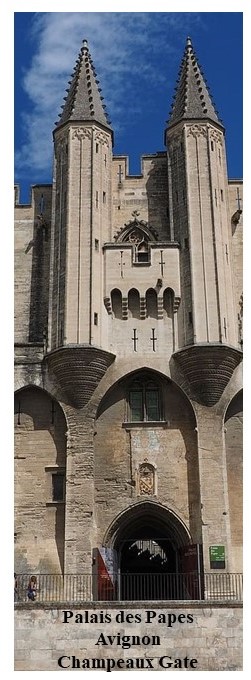|
Spreadsheet |
|
to the Spreadsheet |
|
|
Archives |
|
|

Capellanus honoris is an unimpressive title and a somewhat deceptive one: the honorary chaplains of the popes at Avignon had no connection to the grand chapel of the palace, or to the pope’s private chapel, and as the qualifier honoris hints, they received no stipend. The verdict of Bernard Guillemain is plainly just: Les chapelains d’honneur, ... dispersés à travers la chrétienté, n’étaient plus unis à la curie que par des liens fictifs. Few of the honorary chaplains of Avignon are notable in history, and yet the title was a desirable one, sought by hundreds of men from all over Europe. It carried prestige, it was secured by a solemn oath of loyalty and service to the pope, and the names and titles of the hundreds of chaplains were scrupulously registered by the papal Chancery and Camera.
Pope Gregory XI received 673 chaplains of honor, about as many as his five Avignon predecessors combined. This is a statistical phenomenon that invites exploration.
Gregory XI (1371-1378) was the last pope who ruled the Christian Church of Europe from Avignon, without a rival pope in Rome. During his pontificate the economy of the papal monarchy went from chronic deficit to real bankruptcy because of the improvident ambitions of Gregory and his predecessors, combined with a chain of expensive disasters: the implication of the papal power on the side of France in the Hundred Years War with England; the war of the brothers Visconti against the northern Papal States in Italy; the rebellion of the papal cities of Italy, led by Florence, followed by the papal interdict of Florence; the third wave of bubonic plague in 1375. As the solvency and the spiritual prestige of the papacy declined, Gregory continued to need qualified and loyal agents. The only sector of papal government that was fully staffed and sustained was the fiscal department, the Camera Apostolica. Two other essential functions of the papal monarchy, spiritual and secular, ironically symbolized by the two keys of Saint Peter, needed staff: the absolution of sinners and reconciliation of excommunicates; and inter-sovereign relations with princes and city-states.
We offer this web page as a toolbox for anyone interested in the multilingual corps of honorary chaplains, one organism of the historical scene and moment, the papal monarchy on the eve of the western schism. We welcome corrections and additions of information and documentation at [email protected].